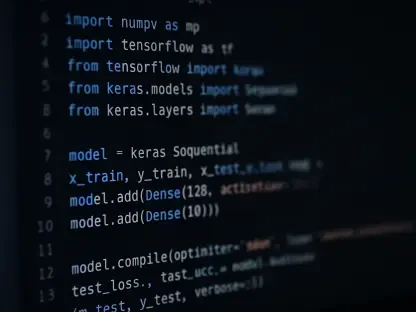Overview of Kubernetes Management and k0rdent’s Role
The Kubernetes management landscape has become a critical battleground for enterprises navigating the complexities of containerized environments, with staggering growth in adoption as organizations deploy applications across on-premises, cloud, and hybrid setups. As container orchestration scales, the challenge lies in maintaining consistency, security, and efficiency across fragmented infrastructures—a hurdle that often leads to operational bottlenecks. This dynamic sets the stage for innovative solutions that can unify control and simplify deployment in an increasingly distributed world.
A standout in this arena is k0rdent, developed by Mirantis as a “super control plane” for Kubernetes. This open-source platform is engineered to streamline distributed container orchestration, offering a centralized approach to managing clusters and services across diverse environments. Its design addresses the pain points of platform engineers by providing templated configurations and reducing the complexity of manual setups, positioning it as a vital tool for modern infrastructure management.
Key industry players like AWS, Azure, and VMware dominate the Kubernetes ecosystem, yet the push toward multi-cloud adoption and open-source solutions is reshaping competitive dynamics. The emphasis on avoiding vendor lock-in has fueled demand for flexible tools that support interoperability across providers. With technological influences driving hybrid strategies, k0rdent emerges as a significant contender by aligning with these trends and offering a foundation built on open standards.
Key Features and Updates in k0rdent v1.2.0
Major Enhancements in the Latest Release
The release of k0rdent v1.2.0 marks a pivotal update, introducing several features tailored to meet evolving user needs. Among the most prominent is the OpenStack Hosted Control Plane template, a community-driven addition that enables seamless integration with OpenStack environments. While a bug in the Cluster API Provider OpenStack delayed its rollout, Mirantis implemented a workaround, though it requires manual configuration of certain infrastructure components like networks and load balancers.
Beyond this, the update enhances support for ARM64 architectures, catering to a growing segment of hardware deployments in cloud and edge scenarios. Flexibility in Azure templates now allows for alternative image sources, addressing customization demands, while refreshed community documentation ensures users have clearer guidance. These changes collectively strengthen the platform’s adaptability to varied operational contexts.
A notable overhaul comes in the Observability & FinOps (KOF) module, which transitions from Victoria Metrics to OpenTelemetry. This shift introduces four specialized collectors for improved metrics labeling and dashboard integration, empowering users with deeper insights into resource usage and cost allocation. Such enhancements reflect a focus on aligning with modern observability standards and financial optimization practices.
Impact on Functionality and User Experience
These updates significantly elevate k0rdent’s capabilities in cluster lifecycle management, allowing platform engineers to deploy and scale Kubernetes environments with greater precision. The streamlined templates and enhanced provider compatibility—spanning AWS, Azure, vSphere, and OpenStack—reduce deployment friction, while extensibility to other infrastructures ensures broader applicability. This adaptability is a key driver in simplifying complex orchestration tasks.
User feedback highlights the platform’s intuitive design, with community members on platforms like Reddit praising its ease compared to traditional tools such as Terraform scripts. The reduction in manual scripting and configuration time has been a recurring theme in positive reactions, underscoring k0rdent’s value in boosting productivity. Such sentiments suggest a growing trust in its ability to handle intricate workloads efficiently.
Moreover, the revamped KOF module enhances cost visibility, a critical factor for enterprises managing cloud expenditures. By integrating advanced metrics and dashboards, it equips teams with actionable data to optimize spending and resource allocation. This focus on both operational efficiency and financial oversight positions the tool as a comprehensive solution for modern platform management challenges.
Challenges in Kubernetes Management Addressed by k0rdent
Managing enterprise applications in today’s environment is fraught with difficulties, particularly as workloads like AI and machine learning demand intricate setups across distributed systems. The diversity of components—databases, processing pipelines, and compute resources—often spans on-premises, cloud, and edge locations, creating significant coordination hurdles. k0rdent steps in to alleviate these issues by offering a unified management layer that simplifies oversight of such fragmented architectures.
Specific pain points, including multi-cloud integration and operational overhead, are directly targeted through its centralized approach. By leveraging declarative templates and GitOps-friendly configurations, the platform minimizes manual intervention and standardizes processes across environments. This reduces the risk of errors and inconsistencies, which are common in environments lacking a cohesive control plane.
Despite these strengths, certain limitations persist, such as the need for manual setup in specific OpenStack configurations due to the workaround for the CAPO bug. This can pose challenges for teams with limited expertise in infrastructure setup. Potential strategies to address this include further automation in future releases or enhanced documentation to guide users through manual steps, ensuring broader accessibility and usability.
Industry Trends and Regulatory Considerations
The Kubernetes ecosystem is witnessing a surge in demand for unified management tools as enterprises increasingly adopt multi-cloud and hybrid strategies. This trend underscores a broader shift toward open standards and interoperability, enabling organizations to avoid dependency on single providers. k0rdent aligns with this movement by supporting a wide array of infrastructure options and maintaining an open-source core that fosters customization and flexibility.
Another critical focus is the rise of FinOps practices, aimed at optimizing cloud spending amid escalating costs. The updated observability tools within k0rdent provide detailed insights into resource usage, enabling better financial decision-making. This capability mirrors industry priorities, where cost efficiency is as vital as technical performance in shaping infrastructure strategies.
Compliance and security in multi-cloud setups remain paramount, with regulatory frameworks demanding robust data protection and governance. The open-source nature of k0rdent allows organizations to tailor security measures to specific standards, offering flexibility in meeting compliance requirements. This adaptability is essential in an era where hybrid environments must balance innovation with stringent regulatory oversight.
Future Outlook for k0rdent and Kubernetes Management
Looking ahead, k0rdent holds substantial potential to influence Kubernetes management through its dual focus on community collaboration and enterprise-grade solutions. Offerings like k0rdent Enterprise, with premium features and dedicated support, and k0rdent AI, tailored for AI lifecycle management, cater to specialized needs while maintaining a strong open-source foundation. This balance positions the platform for sustained relevance in diverse markets.
Emerging trends, such as the growing adoption of hybrid and edge computing, further highlight k0rdent’s strategic versatility. Its ability to manage distributed workloads across varied environments aligns with the industry’s direction toward decentralized infrastructure. As edge deployments gain traction, the platform’s extensibility could become a key differentiator in addressing niche use cases.
Competitive pressures from platforms like Cloudfleet and Rafay, which focus on hybrid environments and SaaS-first operations, present challenges but also opportunities for differentiation. Global IT trends, including the push for automation and cost optimization, are likely to shape k0rdent’s development trajectory. Staying responsive to user needs and technological shifts will be crucial for maintaining its competitive edge in this evolving landscape.
Conclusion and Recommendations
Reflecting on the insights gathered, k0rdent v1.2.0 stands out as a robust response to the intricate demands of Kubernetes management, delivering innovative features that tackle operational complexities with finesse. Its open-source framework paired with enterprise solutions carves a unique niche, balancing accessibility with advanced functionality. The updates, particularly in observability and provider support, address pressing industry needs with precision.
For organizations evaluating Kubernetes tools, exploring k0rdent emerges as a practical next step, with resources like the QuickStart guide and GitHub repository offering accessible entry points for implementation. Investing in training for platform engineers to navigate manual configurations, especially in OpenStack setups, is seen as a way to maximize its potential. Additionally, monitoring future releases for enhanced automation could further streamline adoption.
Looking beyond immediate deployment, stakeholders are encouraged to consider long-term collaboration with the k0rdent community to influence feature development and address specific enterprise challenges. This proactive engagement, alongside strategic investments in Kubernetes solutions, promises to yield tailored benefits. Such steps position organizations to not only adapt to current trends but also shape the future of container orchestration management.









